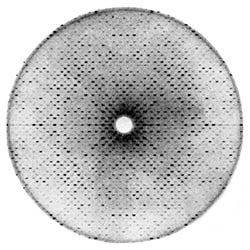
Small-Molecule Single Crystal Diffraction For more information, view the brochures for applicationsand education.

Novel Complex Stacking of Fully-Ordered Transition Metal Layers in Li4FeSbO6 Materials Eric McCalla Artem Abakumov Gwenaelle Rousse Marine Reynaud Moulay Tahar Sougrati Bojan Budic Abdelfattah Mahmoud Robert Dominko Gustaaf Van Tendeloo Raphael P.CCB Center for Crystallographic Studies provides access to state-of-the-art equipment and technologies, hosts a crystallography course and X-ray diffraction application training, and offers advice and technical assistance in crystal growth, data collection, and small-molecule crystal structure determination.Īll Harvard affiliates and external users are welcome.Order and disorder in NMC layered materials: a FAULTS simulation analysis Marine Reynaud Montse Casas-Cabanas.Enhanced electrochemical performance of Li-rich cathode materials through microstructural control Jon Serrano-Sevillano Marine Reynaud Amaia Saracibar Thomas Altantzis Sara Bals Gustaaf van Tendeloo Montse Casas-Cabanas.

Coulombic self-ordering upon charging a large-capacity layered cathode material for rechargeable batteries Benoit Mortemard de Boisse Marine Reynaud Jiangtao Ma Jun Kikkawa Shin-ichi Nishimura Montse Casas-Cabanas Claude Delmas Masashi Okubo Atsuo Yamada.DOI: 10.1098/rspa.1991.0062.Įxamples of studies of battery materials using the program FAULTS: A general recursion method for calculating diffracted intensities from crystals containing planar faults.FAULTS, a new program for refinement of powder diffraction patterns from layered structures.DOI: 10.1107/S1600576716014473 (an authorised electronic reprint is available for FAULTS users in our Downloads section). Casas-Cabanas M., Reynaud M., Rikarte J., Horbach P., Rodríguez-Carvajal J., J.In no event shall the authors (or their institutions) be liable for any damages, including any general, special, incidental, or consequential damages arising out of the use or inability to use the programs.
#CRYSTAL DIFFRACTION IN SPANISH FREE#
The program is distributed in the hope that it will be useful, but WITHOUT ANY WARRANTY of being free of internal errors. Other useful new features are the visualization of the model structures with FullProf Studio and VESTA, the possibility to include the diffracted intensities of the secondary phases as background, the refinement of the background points when treated as polynomial or the automatic conversion of the DIFFaX input files into FAULTS format using the DIFFaX2FAULTS converter. The latest version of the FAULTS program includes a number of remarkable new features, such as the use of the Levenberg-Marquard Minimization Algorithm (LMA) which allows to speed up considerably the calculation time. a computerized comparison of the intensities calculated by DIFFaX with experimental data), as well as allows, as DIFFaX does, the simulation of 2D diffraction patterns and diffuse streaks in the reciprocal space for single crystals. However, sometimes these data are not sufficient for a thorough microstructural characterization.įAULTS, on the other hand, enables to perform refinements of experimental powder patterns (i.e. The DIFFaX program enables calculating the diffraction intensities of the defective layered crystals offering merely qualitative results. The program is based on the CrysFML (Crystallographic Fortran Modules Library) and the DIFFaX (Diffracted Intensities From Faulted Xtals) program.


 0 kommentar(er)
0 kommentar(er)
